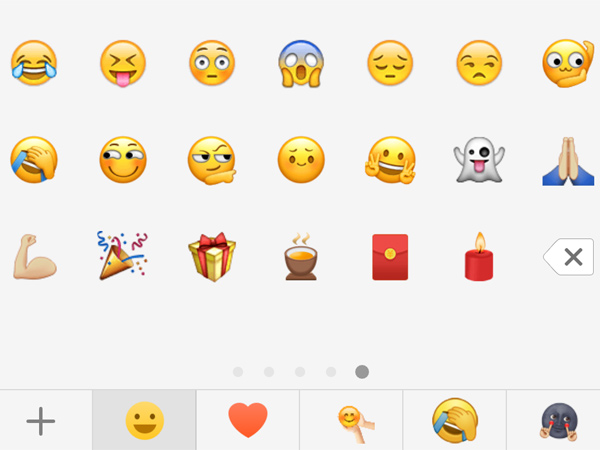

Besides, the use of emoji is associated with psychological differences.
#Make wechat emoji series#
Many researchers from computer science try to solve this problem using a computer method and a series of algorithms or models for semantic disambiguation and sentiment analysis have been developed. Due to its visual characteristics or platform differences, there would be emotional or semantic ambiguity in communication. For example, as emoji are platform-or system-dependent, they are often used in online communication. In addition, a lot of researches on emoji are cross-field. In this paper, the above contents were summarized and reviewed. In addition, due to the extensive use of emoji in social networks, we also referred to some online data sources, such as. We summarized the list of journals and conferences that published articles on emoji more than once, as shown in Table 1. After getting rid of the duplicates, we got 167 papers published in 78 journals and and delivered at 33 conferences. Patents, news, book reviews, editorials, letters, and other literature types were excluded and the two databases were combined. On August 3rd, 2019, we searched Google Scholar and Web of Science using “emoji” as the key word for related literature in English since 1998. With reference to the major platforms for related publications, we chose Web of Science and Google Scholar as literature sources. Literature Search and Criteria for Inclusion This paper reviews the developmental history and usage of emoji, details the emotional and linguistic features of emoji, summarizes the results of research on emoji in different fields, and puts forward future research directions. The research on emoji has become a hot topic in the academic field, and more and more scholars from the fields of computing, communication, marketing, behavioral science and so on are studying them. They not only have unique semantic and emotional features, but are also closely related to marketing, law, health care and many other areas. As a result, emoji, which are a set of expression symbols, came into being.Įmoji are used more and more frequently in network communication, and the way they are used is becoming more and more diversified as well. These expression symbols make up for the lack of non-verbal cues in CMC ( Tossell et al., 2012 Negishi, 2014), and are very well-suited for social media communication ( Barbieri et al., 2016c). To address this problem, communicators have devised new non-verbal cues, such as capitalization as a substitute for shouting, multiple exclamation points for excitement, and expression symbols for facial expressions ( Harris and Paradice, 2007 Riordan and Kreuz, 2010). However, the lack of non-verbal cues such as facial expressions, intonation, and gestures in CMC can affect the transmission of information ( Archer and Akert, 1977). It has many advantages, including enhancing the continuity of individual communication ( Juhasz and Bradford, 2016), improving the quality of relationships ( Pettigrew, 2009 Perry and Werner-Wilson, 2011), and strengthening emotional communication ( Derks et al., 2008b). With the widespread application of computing and the development of technology, computer mediated communication (CMC) is infiltrating daily life to a greater and greater extent.


 0 kommentar(er)
0 kommentar(er)
